
Whale I'll be!
Residents of Vancouver, the Lower Mainland, and Vancouver Island have been treated to an extraordinary spectacle recently, as reports of whale sightings in local waters seem to be popping up every couple of days. From the majestic humpbacks to the iconic Resident and Transient orcas, here are some of the reasons why these marine giants are becoming a more frequent presence in our coastal waters.
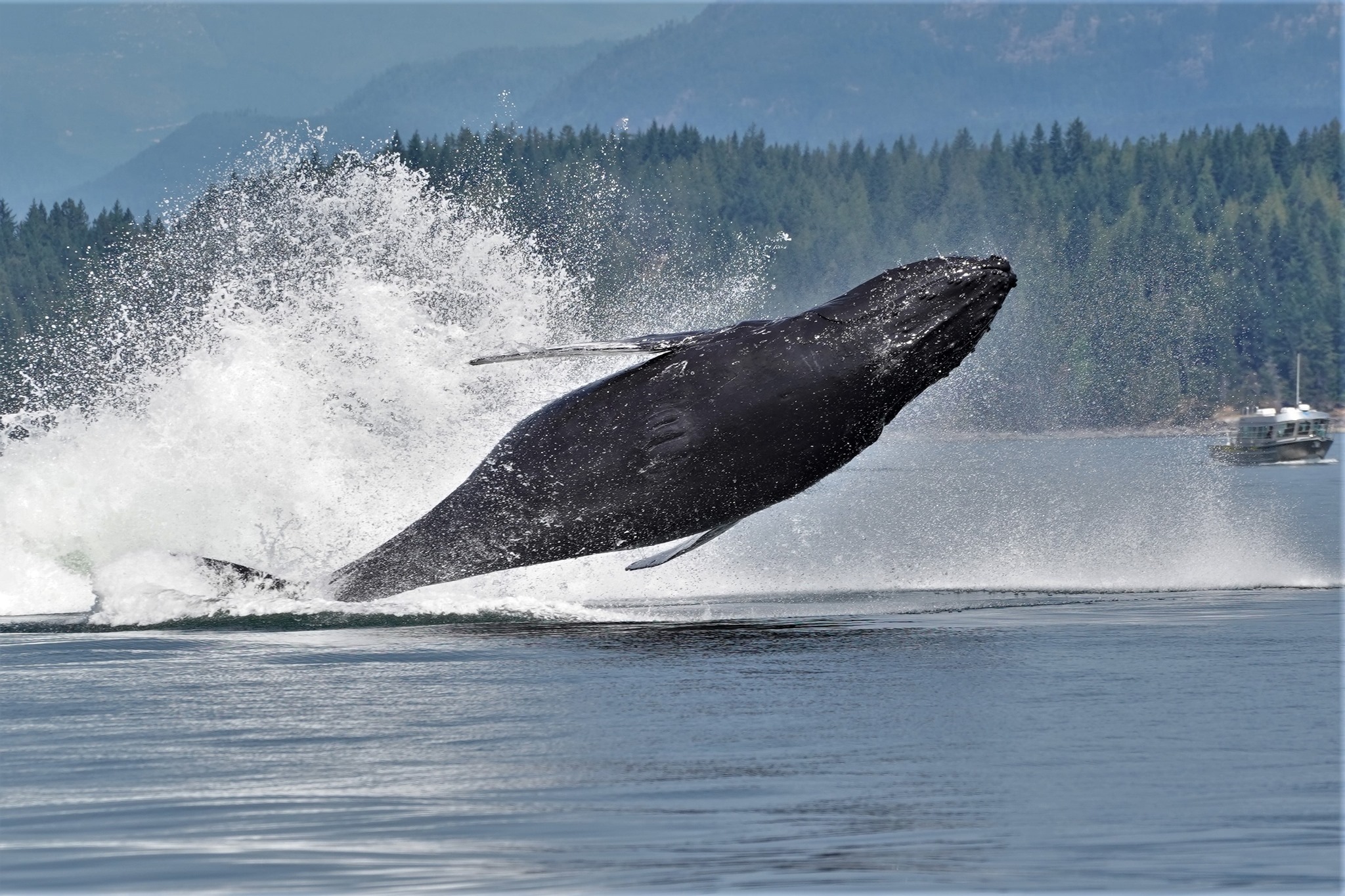 A humpback whale breaches off the coast of Vancouver Island. Photo: Homalco Wildlife & Cultural Tours
A humpback whale breaches off the coast of Vancouver Island. Photo: Homalco Wildlife & Cultural Tours
The resurgence of humpback whales in British Columbia is a conservation success story. In 2022, researchers recorded 396 unique humpbacks in the Salish Sea, a significant increase from 293 in 2017. This upward trend continued into 2024, marking the highest number of humpbacks observed in a single year since records began.
However, the dominant reason that humpbacks are swimming through B.C.'s waters is the time of year: feeding season. During the feeding season, which typically spans from May to October, humpback whales return to our coastal waters to take advantage of the region’s rich marine ecosystems. These waters are teeming with krill, herring, and other small schooling fish that form the primary diet of humpbacks. British Columbia’s nutrient-rich upwellings, particularly around areas like Johnstone Strait, the Great Bear Rainforest, and the waters near Haida Gwaii provide ideal feeding conditions. Humpbacks are often seen engaging in cooperative feeding behaviours such as bubble-net feeding, where groups of whales create spirals of bubbles to trap fish before lunging through with mouths wide open. This period is critical for the whales to build up the fat reserves they'll rely on during their long migration south to tropical breeding grounds, where they fast for several months.
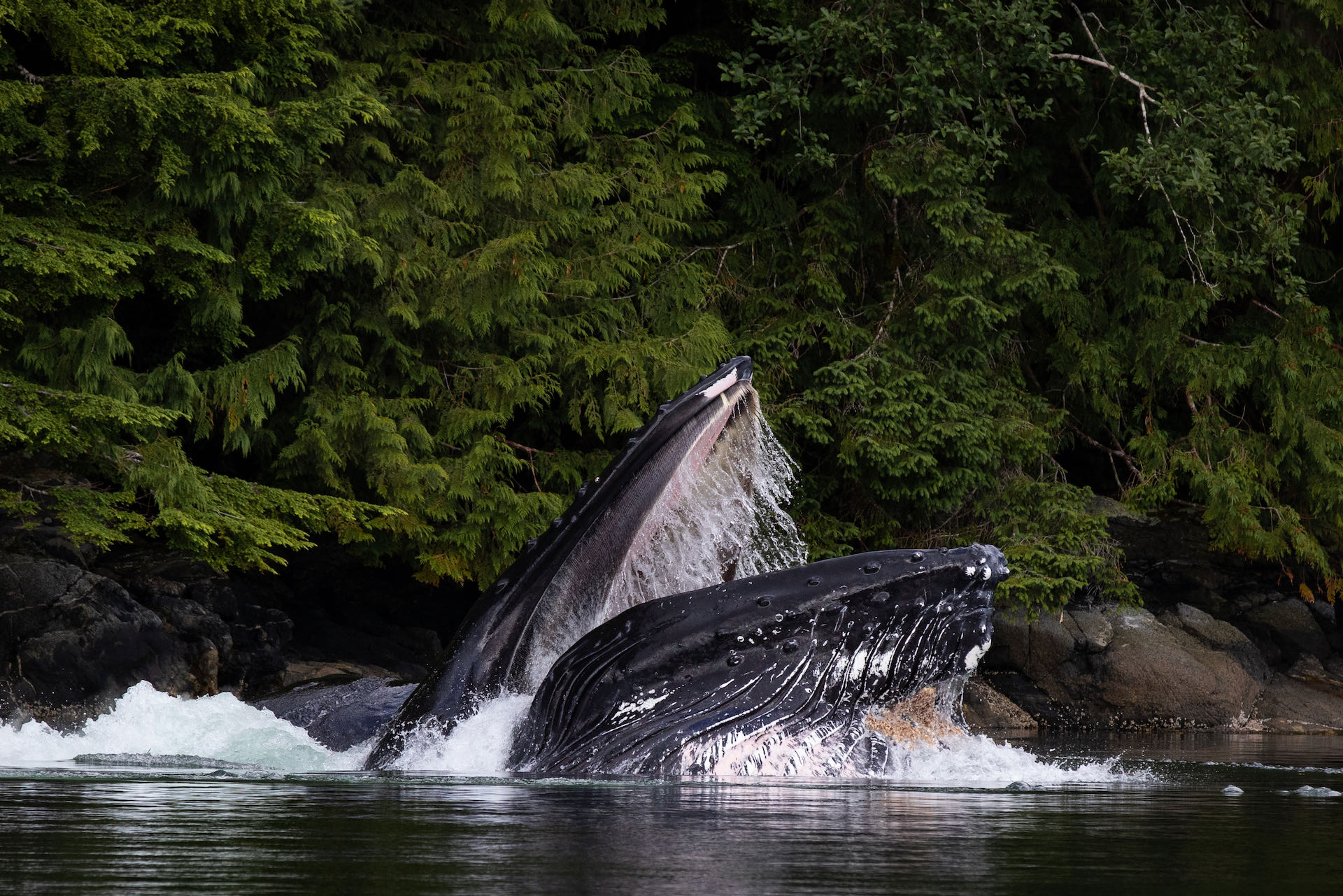 Humpback whales bubble-net feeding in Lazo, B.C. Photo: Spirit Bear Lodge
Humpback whales bubble-net feeding in Lazo, B.C. Photo: Spirit Bear Lodge
According to the Pacific Whale Watch Association (PWWA) and the Orca Behavior Institute (OBI), Transient orcas (also known as Bigg’s killer whales) have been reported in the Salish Sea every day since March 12, 2024. July 2024 was particularly noteworthy, with 214 unique sightings of Bigg’s killer whales, marking a 70% increase compared to July 2023. Notably, groups of up to 41 individuals were observed, and 14 new calves were born during this period. This uptick suggests a healthy and expanding population of the whales.
Unlike their southern resident counterparts, Transient orcas primarily hunt marine mammals, such as seals and porpoises, which are abundant in the region. This dietary preference may contribute to their growing numbers in our waters.
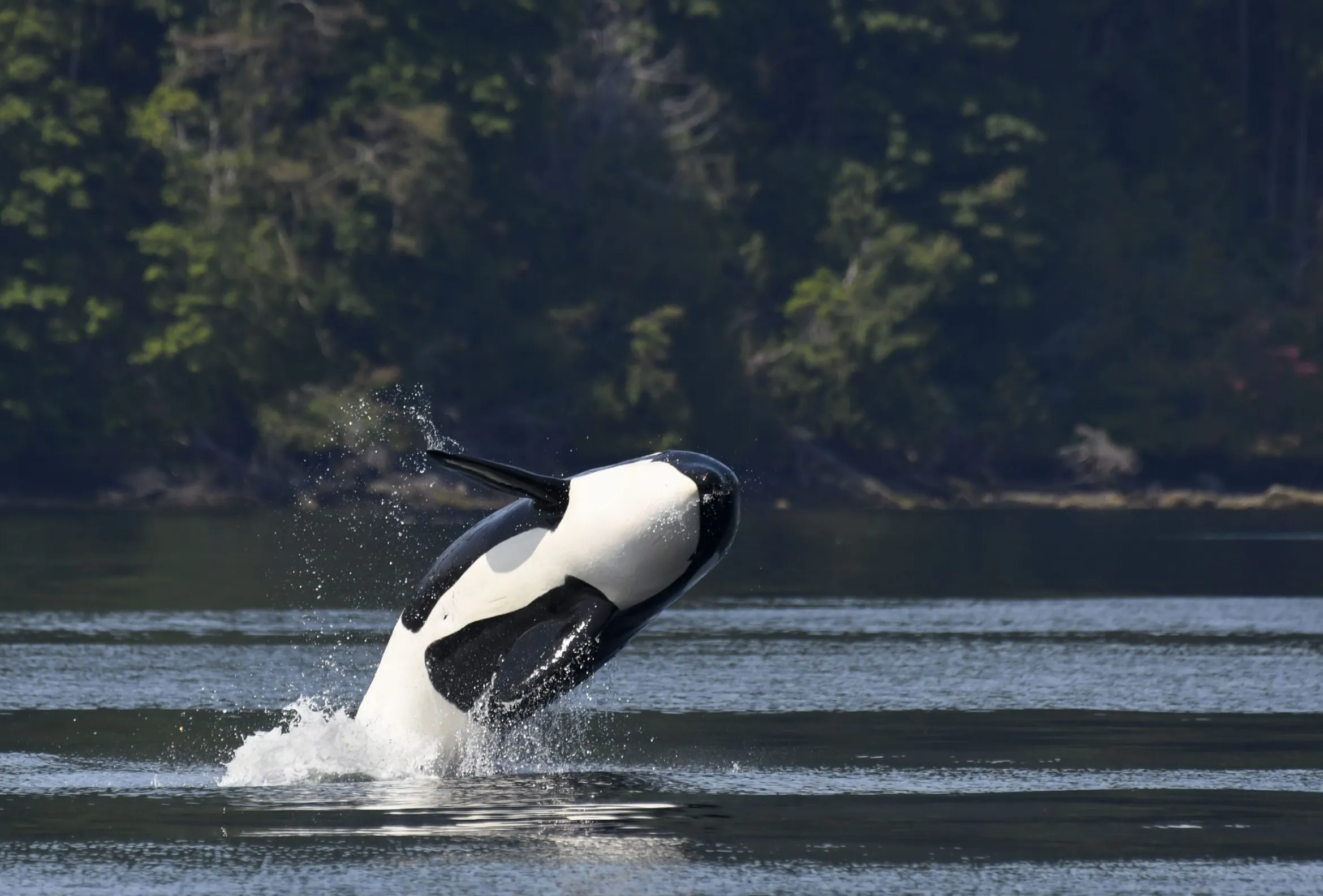 A Transient orca breaches in B.C. waters. Photo: Ashley Keegan, Wild Whales Vancouver
A Transient orca breaches in B.C. waters. Photo: Ashley Keegan, Wild Whales Vancouver
Southern Resident killer whales are the local population of orcas found in the coastal waters of British Columbia and Washington State, and they rely heavily on Chinook and Chum salmon for food. Salmon are more abundant during the summer, which could contribute to more sightings of activity from them, their population remains critically low. Only 74 Resident orcas were reported in 2024, as threats such as underwater noise and limited access to prey impact their numbers.
o protect these whales, Fisheries and Oceans Canada has introduced seasonal salmon fishing closures in areas like the Southern Gulf Islands, Fraser River mouth, Swiftsure Bank, and Juan de Fuca Strait, along with boating regulations that require vessels to stay at least 400 meters away. Conservation efforts also include increased Chinook salmon hatchery releases and proposed measures to limit vessel discharges and strengthen protections in critical habitats.
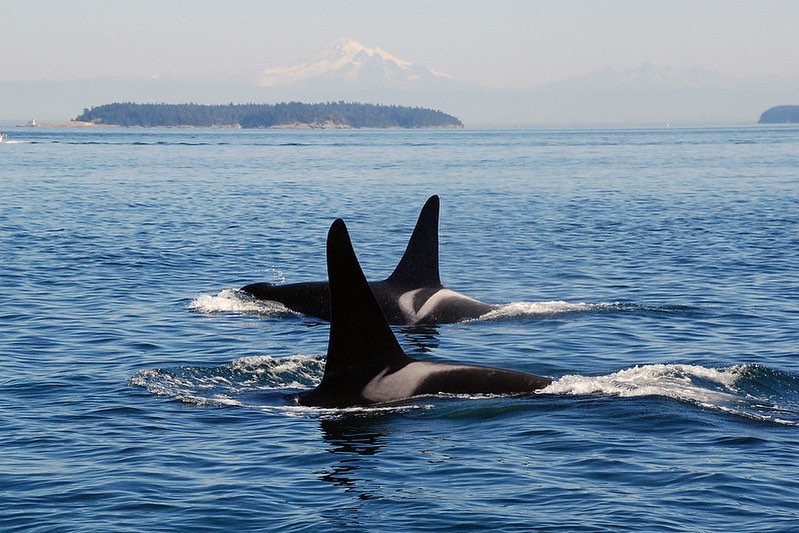 Southern Resident Orcas spotted off the coast of Saturna Island, B.C. Photo: Photo by Miles Ritter
Southern Resident Orcas spotted off the coast of Saturna Island, B.C. Photo: Photo by Miles Ritter
While the resurgence of whales is encouraging, it also brings challenges. In British Columbia and across Canada, protecting whales is a legal and conservation priority. Canadian laws, including the Species at Risk Act and Marine Mammal Regulations, prohibit disturbing marine mammals in any way, such as feeding, touching, or approaching too closely.
In B.C., vessel operators must stay at least 200 metres away from all killer whales, and in southern coastal waters (from Campbell River to north of Ucluelet), this distance increases to 400 metres between June 1 and May 31 to better protect these animals, many of which are at risk. Violating these laws can result in fines of up to $100,000.
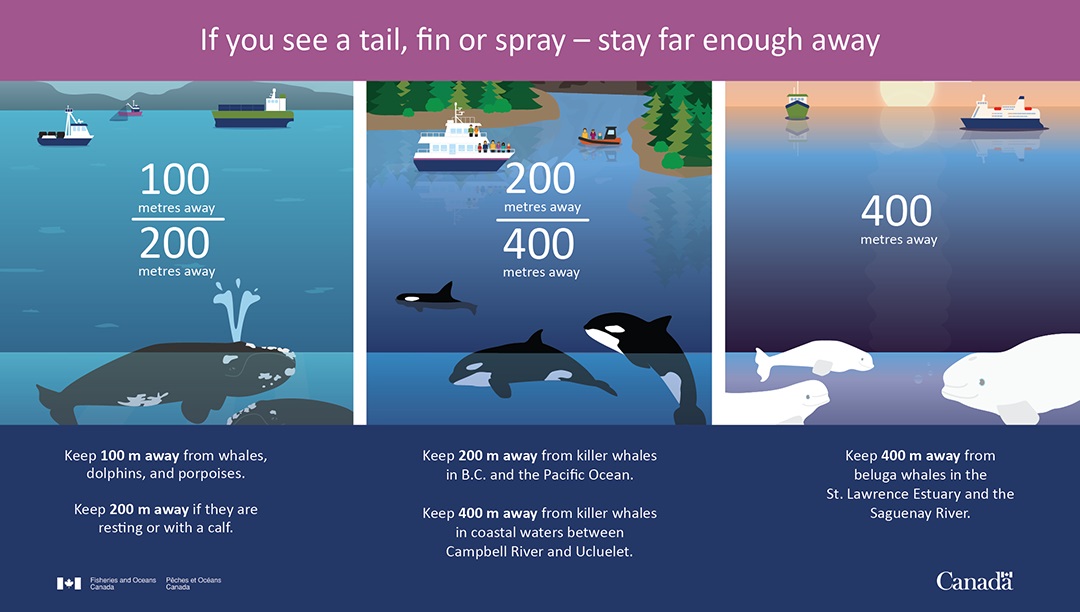 Southern Resident Orcas spotted off the coast of Saturna Island, B.C. Photo: Photo by Miles Ritter
Southern Resident Orcas spotted off the coast of Saturna Island, B.C. Photo: Photo by Miles Ritter
To further safeguard whales in B.C. waters, boaters are encouraged to follow voluntary best practices in addition to the required distances. These include reducing speed to below 7 knots when within 1 km of whales, avoiding sudden changes in direction, never approaching head-on, and limiting viewing time to 30 minutes. Whale watchers are advised to approach only from the side and stay on the offshore side when near the shore. Disturbance can be subtle; signs like a whale changing direction, diving, or displaying agitation are cues to back off.
The overarching message is clear: whales must be given space to thrive, and human activity must be conducted with respect and caution to ensure their continued recovery and presence in B.C. waters. It's crucial for boaters and whale watchers to adhere to guidelines that minimize disturbances to these animals, ensuring their continued presence in our waters.
Have you been lucky enough to spot whales in our waters?
Get the latest news and stories delivered to your inbox.